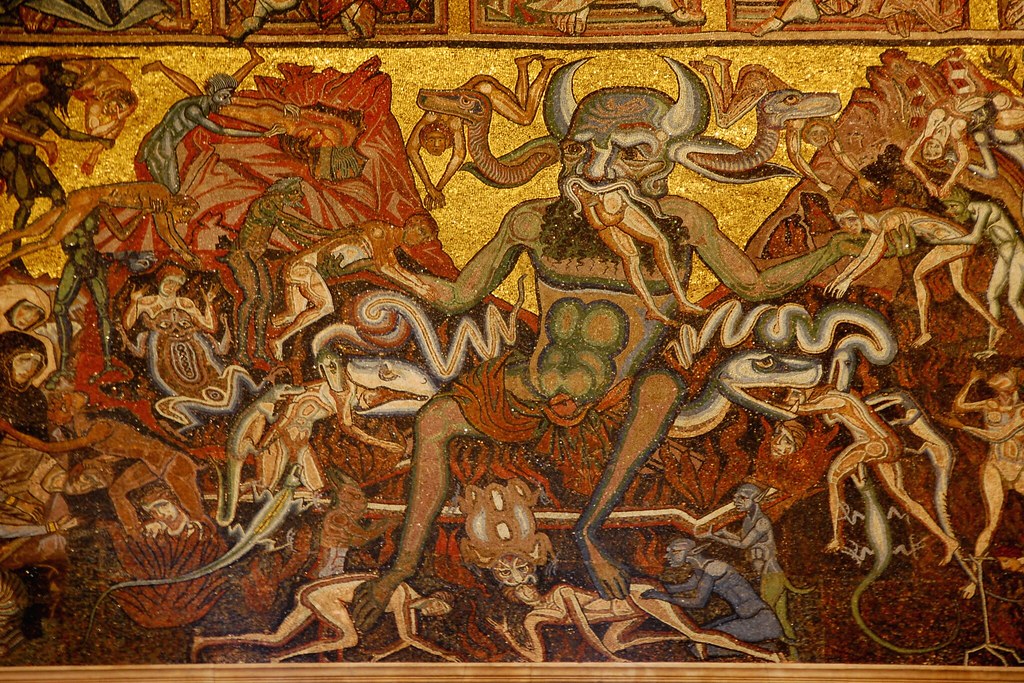
forum.wiara.pl Zobacz wątek WIZJE PIEKŁA W SZTUCE
The son of Mariano di Vanni Filipepi, Alessandro--whose nickname derives from that of his brother Giovanni, called "Botticello" (little barrel)--entered Filippo Lippi's workshop toward the end of the 1450s. The mark of Lippi's style is clearly recognizable in Sandro's earliest paintings, works such as the Madonna and Child in the Ospedale degli.
/illustration-to-the-divine-comedy-by-dante-alighieri--abyss-of-hell---1480-1490--found-in-the-collection-of-the-biblioteca-apostolica-vaticana--486777773-5c3a03c246e0fb00016261f2.jpg)
9 Lingkaran Neraka Dante Panduan Struktur 'Inferno'
Prelude to Hell Canto I Gustave Doré's engravings illustrated the Divine Comedy (1861-1868). Here, Dante is lost at the start of Canto I of the Inferno.. The poem begins on the night of Maundy Thursday on March 24 (or April 7), 1300, shortly before the dawn of Good Friday. The narrator, Dante himself, is 35 years old, and thus "midway in the journey of our life" (Nel mezzo del cammin di.
„Boska komedia” Dantego. Pierwsze kolorowe wydanie w Bibliotece
1444/1445-1510 Italian, Roman, Florentine Venus and Mars about 1485 Sandro Botticelli (1444/1445-1510) The National Gallery, London (Born Florence, c.1445; buried Florence, 17 May 1510). Florentine painter, neglected for centuries but now one of the best-loved artists of the Renaissance.
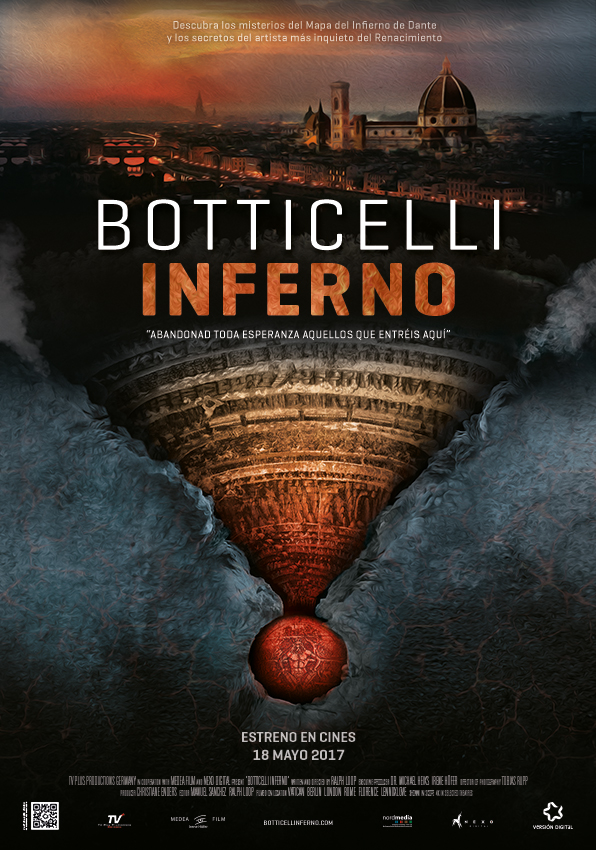
Botticelli. Inferno Película 2016
Sandro Botticelli was born Alessandro di Mariano Filipepi. His date of birth is not certain, but his father, who worked as a tanner, submitted tax returns that claimed Botticelli was two years old in 1447 and 13 years old in 1458. Therefore, art historians have assumed that he was born around 1445.

Botticelli Inferno The Hell of Dante's Divina Commedia The Culture
Botticelli also painted a portrait of the poet, probably to adorn the library of a scholar. These two projects reflect the revival of interest in Dante in late fifteenth-century Florence. An anonymous author, writing in about 1540, informs us that Botticelli "painted and illustrated a Dante on sheepskin for Lorenzo di Pierfrancesco de' Medici.

FileSandro Botticelli 017.jpg Wikipedia
Freski wykonane prawdopodobnie w młodości, nawiązujące w dużej mierze do stylu Lippiego, pokazujące także wpływ malarstwa Baldovinettiego, Verrocchia; w całej twórczości nawiązywał do Pollaiuola oraz Castagna : Stojąca Madonna (obecnie: w kolekcji Gesch w Ajaccio) Madonna della Loggia (obecnie: w Uffizi) dwie Madonny (obecnie: w Luwrze)

ArchivoSandro Botticelli 078.jpg Wikipedia, la enciclopedia libre
Sandro Botticelli - Renaissance, Art, Florence: Botticelli is the earliest European artist whose paintings of secular historical subjects survive in some number and are equal or superior in importance to his religious paintings. Nevertheless, much of his secular work is lost; from a working life of some 40 years, only eight examples by him survive in an already well-established genre, the.

Kolorowanka Welw. 47x35 Piekło Dantego Painting Velvet Sklep
The extract below outlines how Sandro Botticelli approached The Divine Comedy, creating his finely wrought depiction of Inferno, Purgatorio and Paradiso, accompanying texts written by the scribe.

Tapety średniowieczny, medieval art, Demon, Dante and Virgil in the
Dante's part The Divina Commedia (Divine Comedy) is the major work of the Florentine poet Dante Alighieri (1265-1321). This verse epic was probably started in about 1307 and completed just before.

ArchivoSandro Botticelli 076.jpg Wikipedia, la enciclopedia libre
An incipient mannerism appears in Botticelli's late works of the 1480s and in works such as the magnificent Cestello Annunciation (1490) and the small Pietà (late 1490s) now in the Poldi-Pezzoli Museum.After the early 1490s his style changed markedly; the paintings are smaller in scale, the figures in them are now slender to the point of idiosyncrasy, and the painter, by accentuating their.
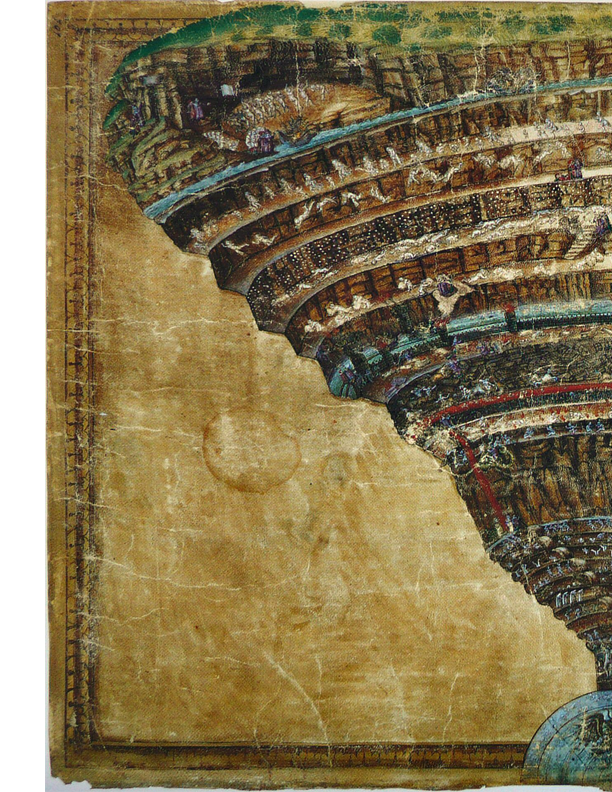
Inferno Dante Botticelli Sylvia Strickland
Perhaps his most famous work, Botticelli's "Birth of Venus" was painted circa 1485, at the height of his powers. The goddess of love stands modestly atop a giant shell, born by the winds as.
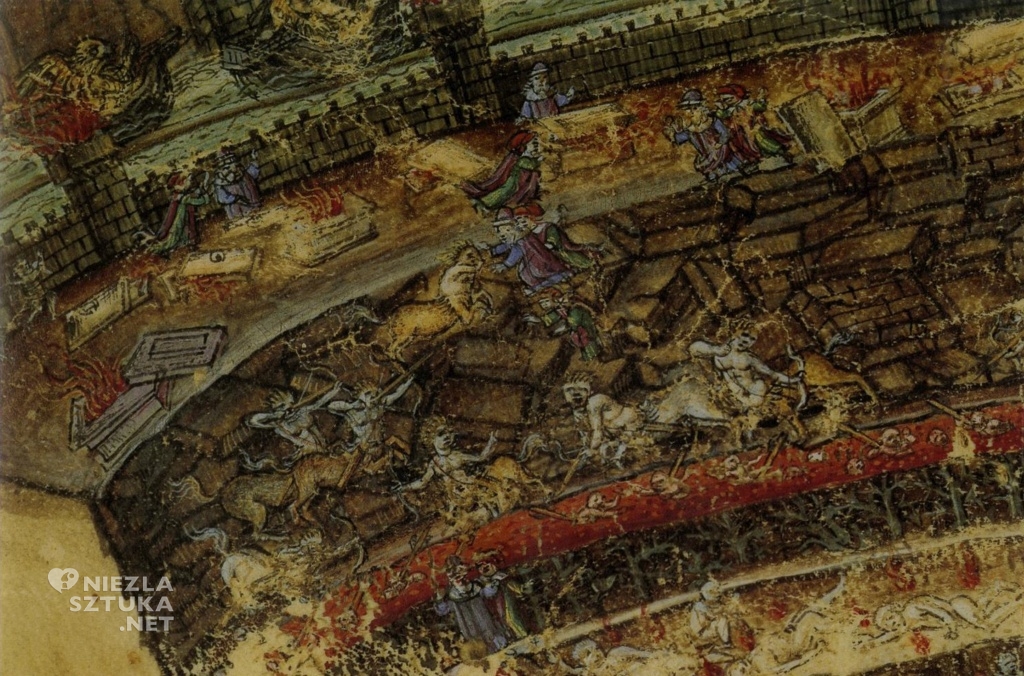
Wizja Sądu Ostatecznego, Piekła i Szatana w malarstwie » Niezła sztuka
Alessandro di Mariano di Vanni Filipepi ( c. 1445 [1] - May 17, 1510), better known as Sandro Botticelli ( / ˌbɒtɪˈtʃɛli / BOT-ih-CHEL-ee, Italian: [ˈsandro bottiˈtʃɛlli]) or simply Botticelli, was an Italian painter of the Early Renaissance.

ArchivoVenus botticelli detail.jpg Wikipedia, la enciclopedia libre
In 1481, together with great Florentine painters such as Ghirlandaio and Perugino, Botticelli was commissioned to create frescos of the Stories of Moses and Christ in the Sistine Chapel in Rome. He returned to Florence, now famous, by 1482, and was busy finishing a series of large paintings, such as The Spring (1478-1482) and The Birth of Venus.
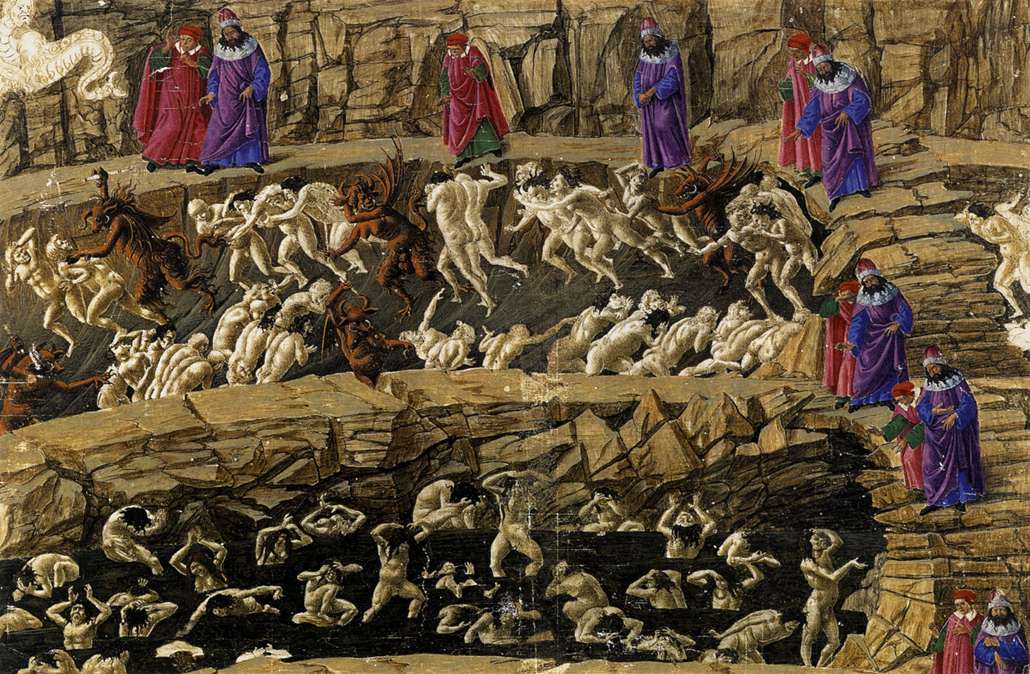
book review Dan Brown’s Inferno Kurzweil
The period from 1478-90 saw Botticelli at his most creative. This was the period during which he produced his famous mythological works, such as 'The Birth of Venus' (in the Uffizi, Florence) and 'Venus and Mars'. In these he successfully combined a decorative use of line (possibly owing much to his early training as a goldsmith) with elements.
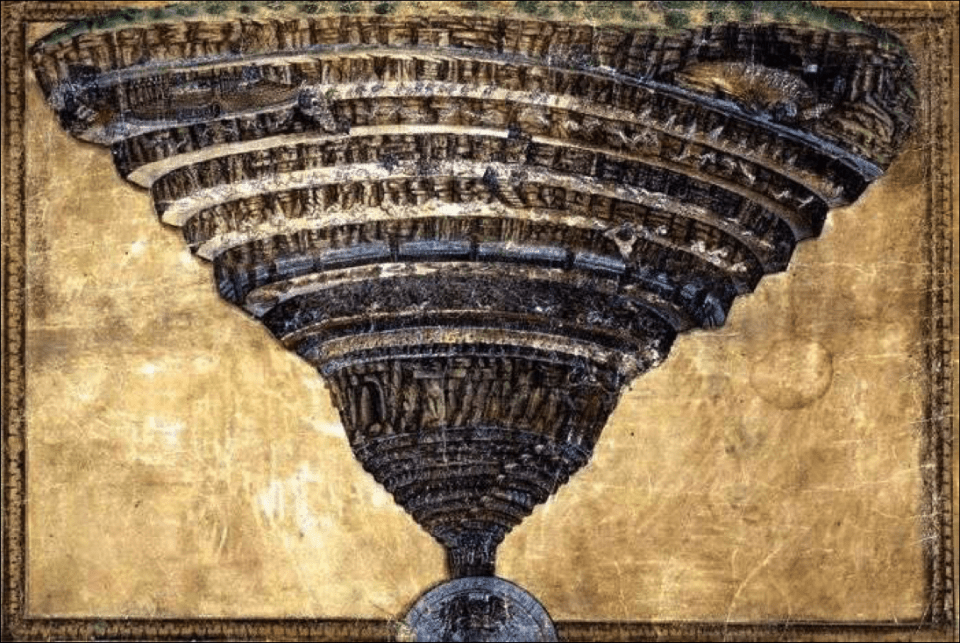
Piekło wygnańca Sztuka Dwutygodnik Dwutygodnik
Definition. Sandro Botticelli (1445-1510 CE), real name Alessandro di Mariano Filipepi, was an Italian artist of the early Renaissance. A prolific painter, especially of altarpieces and works with a religious theme, Botticelli's most famous work today is, ironically, the mythological Birth of Venus which is now on display in the Uffizi Gallery.

GC5M2WP O Inferno de Dante (Unknown Cache) in Lisboa, Portugal created
On October 25, 2022, Joseph Luzzi's Botticelli's Secret: The Lost Drawings and the Rediscovery of the Renaissance will be published by W. W. Norton. Joseph's book describes how, some 500 years ago, Sandro Botticelli, a painter of humble origin, created works of unearthly beauty. A star of Florence's art world, he was commissioned by a.